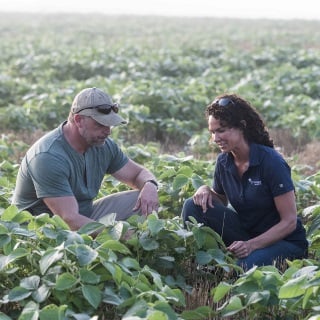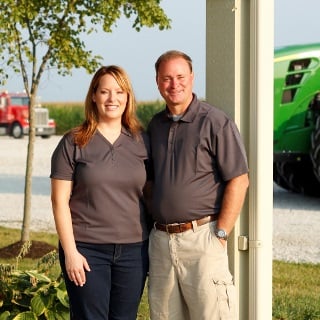From the Federal Reserve to the ongoing conflict in Ukraine and tight global stocks, the current geopolitical and economic climate is creating significant waves that extend to agriculture.
“There’s just a tremendous amount of uncertainty shaking the world economy right now,” said Dr. Brent Gloy, founder of Agricultural Economics Inc. (AEI), during a discussion hosted by Farm Credit Mid-America to help producers navigate ever-changing global issues.
Gloy and AEI co-founder David Widmar touched on several global issues that will impact U.S. farms. With Russia and Ukraine important contributors to the global export community, particularly with corn and wheat, the ongoing conflict could continue to be problematic, they said. Because of the war, there’s less land available for planting and the crops that are produced can be difficult to transport by rail or export due to closed ports.
“The shock (of the war) was big a year ago but we’re still working through that and we’re going to continue to work through that in the months and years to come,” Widmar said.
“We’re not sure we’ve seen all of the big impacts that conflict has had play out yet,” Gloy added. “I think it’s important to remember that there is a major conflict continuing there. Potentially, things like harvested acreage shrinking now portends that that shock will be with us for awhile.”
While Ukraine presents uncertainty on the supply side, China is showing record demand for U.S. products, spending about $40 billion in 2022. That’s great for agriculture, Gloy and Windmar said, but not guaranteed to continue as diplomatic relations between the countries are tense. “It’s important to think through how all these blocks can move and change,” Gloy said.
While the webinar was designed to cover issues overseas, it also gave an overview of issues affecting the domestic economy: namely inflation and interest rates. The overall economy doesn’t have agriculture’s “natural hedge” – or tendency to balance itself, for instance, with yields vs prices – which can be frustrating for agriculture. No matter how much the agriculture economy contracts and corrects itself, it’s not big enough to change the overall economy, Gloy said.
What can producers do get through uncertainties? Widmar and Gloy offered three sound strategies:
1. Avoid complacency.
Stay on top of your operation and what’s happening in the markets so you can make changes in operations as needed. “When there’s a lot of noise in the world, (complacency) is kind of a natural default. You want to hunker down and just go through the storm but we need to be able to ... recalibrate,” Widmar said.
2. Be prepared for wide price swings.
There could be a wide range of outcomes, so be prepared. Corn was priced about $6 a bushel at the beginning of 2023, Widmar said, but has been drifting lower. Watch for price swings and be ready for any scenario.
3. Be prepared for high production costs and uncertainties.
Start thinking now about strategy. Is it time to be more aggressive with a marketing plan? What can you do with extra profits to create wiggle room for difficult times? With any opportunities you pursue – expanding operation or buying new equipment, for example – approach with discipline.
Staying informed, consulting with trusted advisors and maintaining solid business practices is the best formula for not only weathering uncertainties but being in the position to take advantage of opportunities, as well. “The ultimate defense in all of these situations is to build a really sound, resilient financial situation in your business,” Gloy said.
The discussion was the first in a three-part series Farm Credit Mid-America is hosting with AEI. The next installment in late spring will examine macroeconomics and the third webinar, in late summer, will look at farm economics and commodity prices as producers prepare for year-end activities.
To get all the information and insight shared by our experts, watch the full webinar above.





